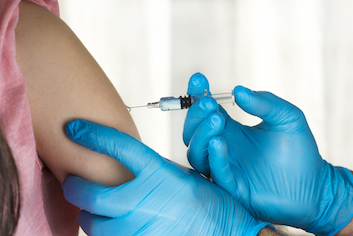Abstract
Objective To evaluate the risk of narcolepsy in children and adolescents in England targeted for vaccination with ASO3 adjuvanted pandemic A/H1N1 2009 vaccine (Pandemrix) from October 2009.
Design Retrospective analysis. Clinical information and results of sleep tests were extracted from hospital notes between August 2011 and February 2012 and reviewed by an expert panel to confirm the diagnosis. Vaccination and clinical histories were obtained from general practitioners.
Setting Sleep centres and paediatric neurology centres in England.
Participants Children and young people aged 4-18 with onset of narcolepsy from January 2008.
Main outcome measures The odds of vaccination in those with narcolepsy compared with the age matched English population after adjustment for clinical conditions that were indications for vaccination. The incidence of narcolepsy within six months of vaccination compared with the incidence outside this period measured with the self controlled cases series method.
Results Case notes for 245 children and young people were reviewed; 75 had narcolepsy (56 with cataplexy) and onset after 1 January 2008. Eleven had been vaccinated before onset; seven within six months. In those with a diagnosis by July 2011 the odds ratio was 14.4 (95% confidence interval 4.3 to 48.5) for vaccination at any time before onset and 16.2 (3.1 to 84.5) for vaccination within six months before onset. The relative incidence from the self controlled cases series analysis in those with a diagnosis by July 2011 with onset from October 2008 to December 2010 was 9.9 (2.1 to 47.9). The attributable risk was estimated as between 1 in 57 500 and 1 in 52 000 doses.
Conclusion The increased risk of narcolepsy after vaccination with ASO3 adjuvanted pandemic A/H1N1 2009 vaccine indicates a causal association, consistent with findings from Finland. Because of variable delay in diagnosis, however, the risk might be overestimated by more rapid referral of vaccinated children.
Source: BMJ 2013; 346 doi: http://dx.doi.org/10.1136/bmj.f794 (Published 26 February 2013).
For the full paper, see: http://www.bmj.com/content/346/bmj.f794


